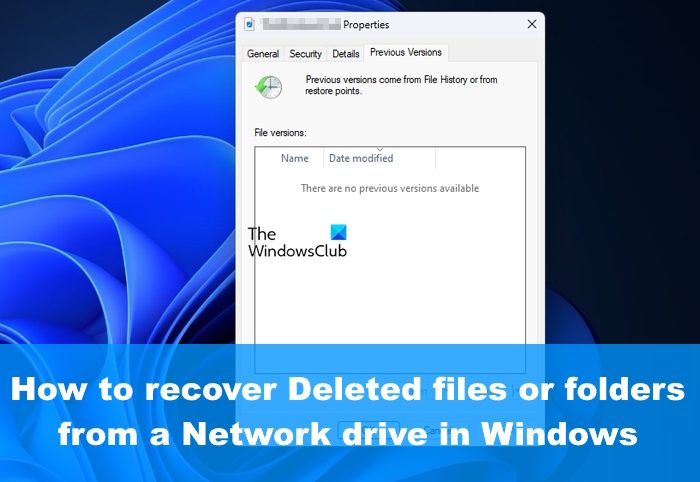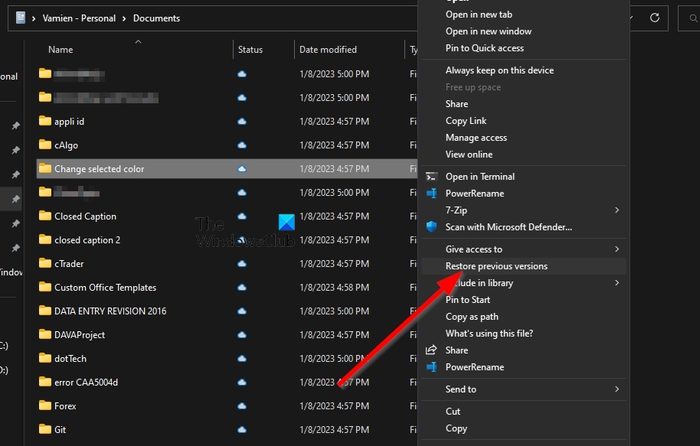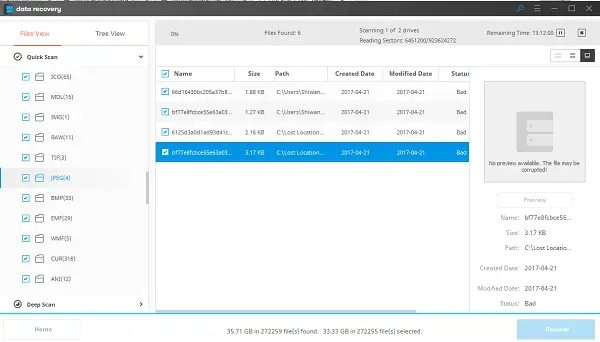If you’ve ever deleted files and folders from a network drive in Windows 11/10, you may be wondering if it is possible to recover these files before they disappear forever.

You see, there are several solutions to this problem, all of which we intend to discuss in this article. The solutions here are simple to understand and will only take a few minutes out of your time if you’re willing to have some patience.
How to recover deleted files from a network drive
Recovering deleted files from a network drive is much easier than you might have imagined. The following solutions will help you accomplish your goals:
- Recover deleted data from a shared folder via the Previous version
- Check the Recycle Bin
- Recover data with software
1] Recover deleted data from a shared folder via the Previous version

This method works if you have enabled Previous Versions to recover files and the files haven’t been deleted in the past 7 days, so let us look at what needs to be done here.
- Navigate to the file location on your Windows 11 computer.
- Chances are you’ll have to open File Explorer to get this done.
- From there, right-click on the file and select Restore Previous Versions.
- Click on the latest version of the file before it was deleted.
- Click on the Open option.
- Once that is done, scroll until you’ve located the deleted file.
- Right-click and select Copy.
Paste the copied file in the correct location on your Windows 11 computer, and that’s it.
This is how you can restore Previous Versions of Files and Folders.
2] Check the Recycle Bin
The next method here is to check the Recycle Bin of the remote computer. For those wondering, the remote computer is the lead computer on a shared network. Any file deleted on this shared network will instantly reach the Recycle Bin.
- To begin, then, you must locate & open the Recycle Bin.
- Locate the file(s) you want to recover.
- Right-click on the file, then select Restore via the context menu.
The file will be sent back from whence it came.
3] Recover files with Data Recovery Software

You can run professional Data Recovery Software on the Remote Computer to scan the Network Drive
All the software listed above can be downloaded and used for free. There are paid options out there that offer additional features.
READ: Could not reconnect all Network drives on Windows
How do I access files on a network drive?
First, you must open File Explorer, then navigate to This PC. After that, select the correct drive letter, and in the Folder box, type the path of the folder or computer. Alternatively, you can click on Browse to find the computer or folder. Select the Finish button to complete the task.
How do I show hidden files on a network drive?
Go to the Search box and type Folder, then select Folder Options from the search results. Click on the View tab, and under Advanced settings, please click on Show Hidden Files, Folders, and Drives. Select the OK option, and that’s it.
Is there a Recycle Bin for network drives?
When a file is intentionally or accidentally deleted, what happens to such files, which are usually stored on the network or mapped network? The file will be deleted permanently because it cannot go through the local computer’s or server’s Recycle bin, and that’s if the Recycle bin was not originally enabled on the shared device. The data residing on the drive is lost, and the only way to avoid issues such as this one is to enable the Recycle bin on the mapped network drive.
How to enable Recycle Bin on Mapped Network Device?
To begin, you must first map a network drive directly to the network share you plan on using in the future. From there, check to ensure the drive is reconnected once logged in.
- After that, go to C: > Users > Username.
- Right-click on a folder from this location, then select Properties via the context menu.
- Go to the Location tab, and click on Move in a bid to browse the root drive.
- Click on Select Folder, and complete the task by hitting the OK button.
- Select Yes when it appears, and be sure to repeat this step for each user on the network.
Hope this helps.